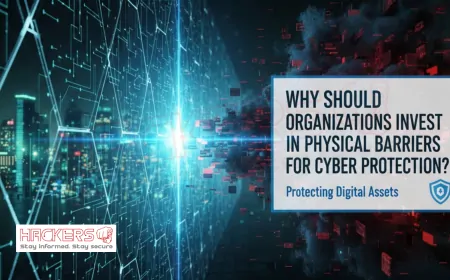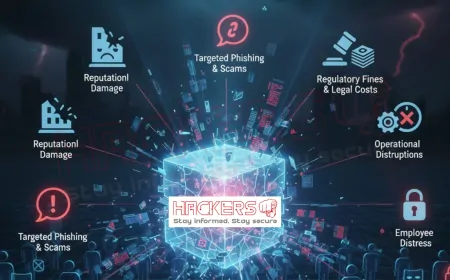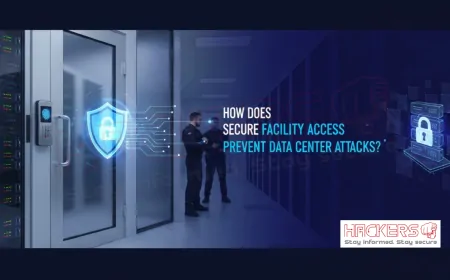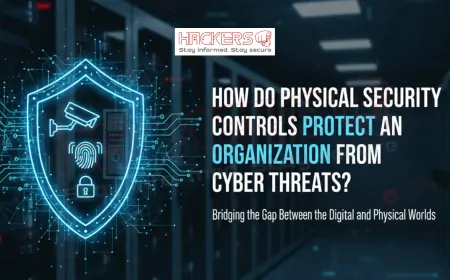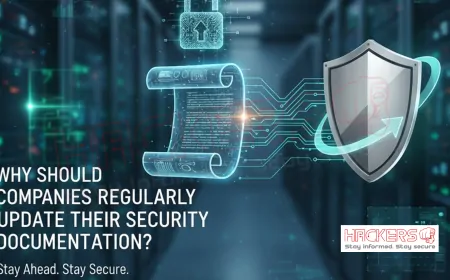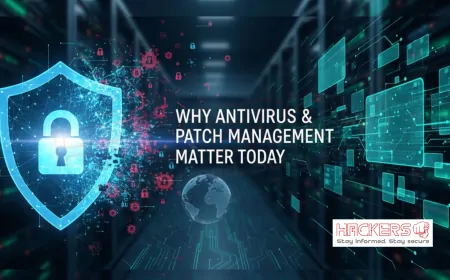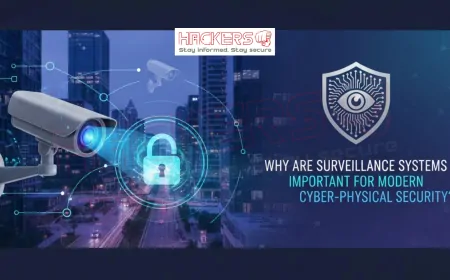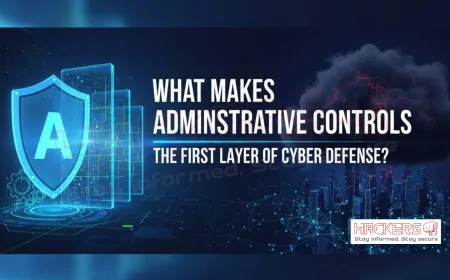What Role Does IoT Play in Power Grid Vulnerabilities?
Every morning, millions of smart thermostats wake up before their owners. They adjust temperatures, talk to the cloud, and quietly help balance electricity demand across cities. At substations, tiny sensors monitor transformer health. On power lines, drones with cameras inspect hard-to-reach spots. This is the Internet of Things (IoT) at work in the modern power grid: small, smart, and connected. But here’s the unsettling truth: every new device added to the grid is a potential door for hackers. IoT promises efficiency and insight, yet it also expands the attack surface in ways engineers never imagined a decade ago. A single compromised smart meter in a neighborhood can become a stepping stone to a regional blackout. This blog explores how IoT is reshaping power grid security, why it creates new vulnerabilities, and what the industry must do to stay safe. Written clearly and honestly, this guide is for utility workers, policymakers, and anyone who flips a light switch and expects it to work.

Table of Contents
How IoT Is Transforming the Power Grid
The power grid was once a one-way street: power plants generated electricity, lines delivered it, and homes consumed it. IoT flips this model. Now, devices talk back. A smart meter doesn’t just record usage. It reports outages instantly, detects theft, and helps predict demand. Sensors on transformers measure oil temperature and vibration, warning of failures before they happen. Even electric vehicles (EVs) join the conversation, charging when power is cheap and feeding energy back during peaks.
These changes enable demand response, where utilities lower air conditioning across thousands of homes during heatwaves to avoid blackouts. They support distributed energy resources like rooftop solar, allowing homes to sell excess power. And they make the grid self-healing: when a tree falls on a line, IoT sensors reroute power in seconds.
By 2030, analysts expect over 1 billion IoT devices in the global power sector. In India alone, 250 million smart meters are being rolled out. In the U.S., utilities deploy millions of sensors annually. This is progress. But progress comes with risk.
Why IoT Devices Are Security Risks
IoT devices are built for function and cost, not fortress-like security. Many run on lightweight operating systems with limited processing power. They ship with default passwords like “admin” or “1234”. Updates are rare. Some lack encryption. And they live for 10 to 20 years in harsh environments: rooftops, underground vaults, remote substations.
Here are the core vulnerabilities:
| Vulnerability | Why It Exists | Risk to Power Grid |
|---|---|---|
| Default Credentials | Manufacturers prioritize ease of setup over security | Hackers scan for open devices and log in instantly |
| No Encryption | Low-power chips can't handle strong encryption | Attackers intercept commands or inject false data |
| Rare Updates | Devices in remote locations; updates risk downtime | Known flaws remain unpatched for years |
| Weak Authentication | No multi-factor or certificate-based login | Compromised device joins the network as trusted |
| Long Lifespan | Designed to last decades with minimal maintenance | Outdated software becomes a permanent liability |
These aren’t hypothetical flaws. In 2016, the Mirai botnet took down major websites by hijacking millions of IoT devices: cameras, routers, and yes, some smart appliances. If a botnet can crash the internet, imagine what it could do to a power grid.
Realistic Attack Scenarios Involving IoT
Let’s walk through three plausible ways IoT can be weaponized against the grid:
- Scenario 1: The Smart Meter Swarm
A hacker compromises 100,000 smart meters in a city. At 7 PM, during peak load, they send simultaneous “disconnect” commands. Fuses blow. Substations overload. The grid operator scrambles to restore power manually. It takes hours. Businesses lose revenue. Hospitals switch to generators. - Scenario 2: False Data Injection
Sensors on high-voltage lines report normal temperatures. In reality, a fire is starting. The control system, trusting the IoT data, delays response. The line melts. A cascade failure begins. This is called a man-in-the-middle attack on sensor data. - Scenario 3: The Backdoor Pivot
A maintenance contractor installs a new IoT gateway with a hidden backdoor. Over months, the attacker maps the network. When ready, they jump from the gateway to the SCADA system and open breakers across a region. The IoT device was the quiet entry point.
These aren’t science fiction. In 2021, a water treatment plant in Florida was hacked when an employee used TeamViewer with a weak password. The attacker tried to poison the water supply. The plant used IoT controllers. The breach was stopped only because an operator noticed the intrusion in real time.
The Current State of IoT in Global Power Systems
IoT adoption varies widely. In Europe, utilities like Enel in Italy have deployed over 40 million smart meters with built-in security. In the U.S., California leads with advanced metering infrastructure (AMI), but many rural co-ops still use first-generation devices. In India, the government’s RDSS scheme aims to install 250 million smart meters by 2025, but cybersecurity standards are still evolving.
A 2023 report by the International Energy Agency (IEA) found that less than 20 percent of IoT devices in the power sector use end-to-end encryption. Another study by Gartner predicts that by 2027, 75 percent of enterprise-generated data will be created at the edge: exactly where most grid IoT lives.
Standards are emerging. The IEEE 2030.5 protocol defines secure communication for smart energy devices. The NIST 8259 guidelines help manufacturers build secure IoT. But adoption is slow. Many vendors prioritize cost and compatibility over security.
How to Secure IoT in the Power Grid
Securing IoT doesn’t mean removing it. It means building security in from the start. Here are proven, practical steps:
- Device Hardening: Change default passwords. Disable unused ports. Use secure boot to prevent tampered firmware.
- Network Segmentation: Place IoT devices in a separate network zone. Use firewalls to limit traffic to only necessary protocols (e.g., MQTT, CoAP).
- Encryption Everywhere: Encrypt data in transit (TLS) and at rest (AES). Even low-power devices can support lightweight encryption.
- Automated Updates: Use over-the-air (OTA) updates with digital signatures. Test in staging environments first.
- Behavioral Monitoring: Use AI to detect anomalies: a meter sending 1,000 messages per second is not normal.
- Zero Trust Architecture: Never trust, always verify. Every device must authenticate using certificates, not just IP addresses.
- Supply Chain Security: Audit vendors. Require third-party security testing. Avoid single-source dependency.
- Incident Response: Have a plan. Know how to isolate a compromised neighborhood of meters in under 5 minutes.
Leading utilities are already acting. Southern Company in the U.S. uses private 4G networks for IoT to avoid public internet risks. In Singapore, SP Group deploys blockchain for device identity. In India, Tata Power uses AI-driven security operations centers (SOCs) to monitor IoT traffic.
The Future: Opportunity and Ongoing Risk
The future grid will be more distributed, more renewable, and more IoT-dependent. Edge computing will push decision-making to devices. 5G and satellite networks (like Starlink) will connect remote sensors. Digital twins: virtual models of physical assets: will rely on real-time IoT data.
But risk grows in parallel. Quantum computing could break today’s encryption. Deepfakes could trick operators via smart cameras. And as grids interconnect across borders, a breach in one country could ripple globally.
The solution lies in secure by design. Regulators must mandate minimum security standards. Manufacturers must compete on security, not just price. And utilities must treat IoT as critical infrastructure, not just gadgets.
Conclusion
IoT is not the enemy of the power grid. It is its nervous system. It brings visibility, agility, and resilience. But like any nervous system, it must be protected. Every unpatched sensor, every default password, every unencrypted message is a vulnerability waiting to be exploited.
The stakes are high. A compromised grid doesn’t just mean dark homes. It means stalled hospitals, frozen factories, and vulnerable communities. Yet, the path forward is clear: build security into every device, segment networks, monitor behavior, and plan for the worst.
We cannot unplug IoT. It is here to stay. But we can: and must: make it safe. The light switch of tomorrow depends on the security we build today.
What is IoT in the context of power grids?
IoT refers to internet-connected devices like smart meters, sensors, and controllers that monitor and manage electricity flow in real time.
Why are IoT devices hard to secure?
They have limited processing power, long lifespans, and are often deployed in large numbers with minimal maintenance.
Can a single smart meter cause a blackout?
Not alone, but thousands acting together under hacker control can overload substations or trigger false protection relays.
What is demand response?
A program where utilities remotely reduce power use (like dimming ACs) during peak times to prevent blackouts.
Are all smart meters vulnerable?
No. Newer models with encryption, secure boot, and OTA updates are much safer than older ones.
What is edge computing in the grid?
Processing data locally on devices (like a smart transformer) instead of sending everything to a central server.
How do hackers compromise IoT devices?
Through default passwords, unpatched flaws, phishing, or supply chain attacks during manufacturing.
What is MQTT?
A lightweight messaging protocol used by IoT devices to send small data packets efficiently.
Can 5G improve grid IoT security?
Yes, with network slicing and private 5G, it offers better isolation and control than public Wi-Fi or cellular.
What is a botnet?
A network of compromised devices (like IoT sensors) controlled by a hacker to launch attacks.
Why do utilities avoid updating IoT devices?
Updates can cause downtime, and many devices are in hard-to-reach locations like underground vaults.
What is secure boot?
A feature that ensures only authorized, untampered firmware runs when a device starts.
Can blockchain secure IoT in the grid?
Yes, it can verify device identity and ensure data integrity in decentralized energy trading.
What is NIST 8259?
A U.S. guideline for manufacturers to build more secure IoT devices from the ground up.
Are rural grids more vulnerable to IoT attacks?
Yes, they often use older devices, have less monitoring, and rely on public networks.
What is a digital twin?
A virtual replica of a physical asset (like a turbine) that uses IoT data to simulate and predict behavior.
Can AI detect compromised IoT devices?
Yes, by analyzing traffic patterns and flagging devices that behave abnormally.
Is IoT used in renewable energy?
Absolutely. Solar inverters, wind turbine sensors, and battery systems all use IoT for monitoring and optimization.
Who is responsible for IoT security in the grid?
Everyone: manufacturers, utilities, regulators, and even consumers using smart home devices.
Will IoT make blackouts more or less common?
Less common if secured properly. IoT enables faster fault detection and self-healing grids.
What's Your Reaction?













